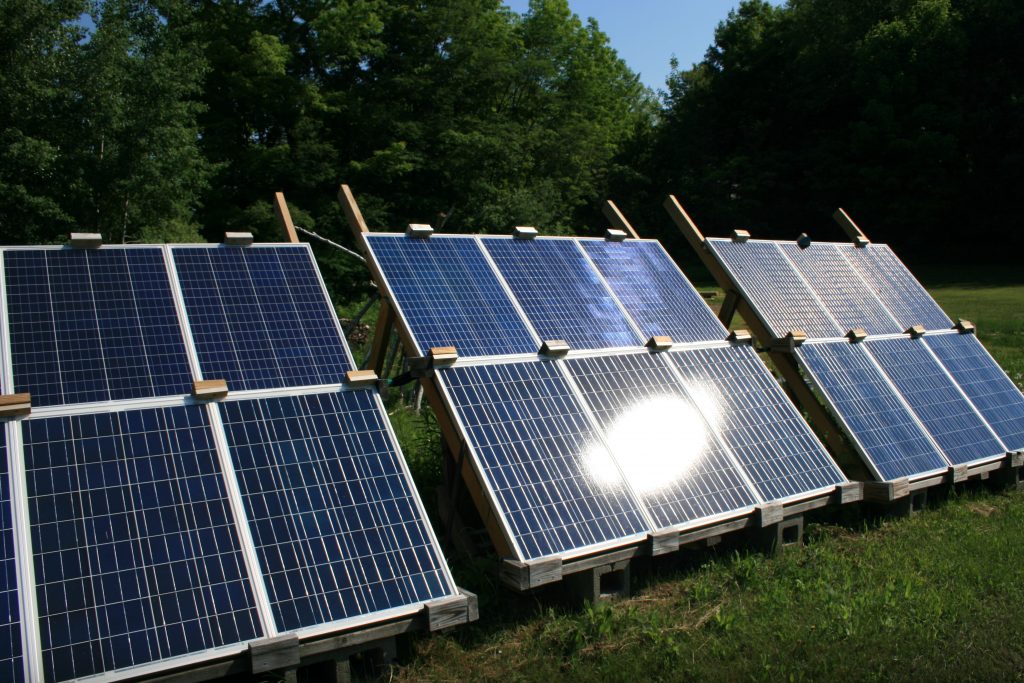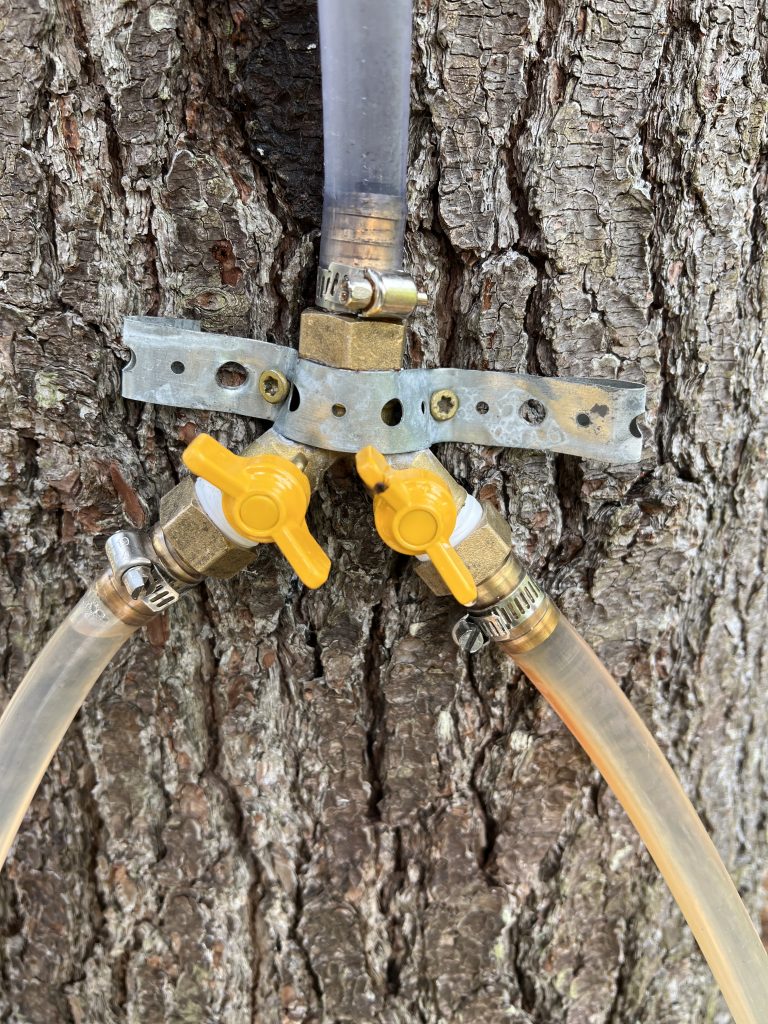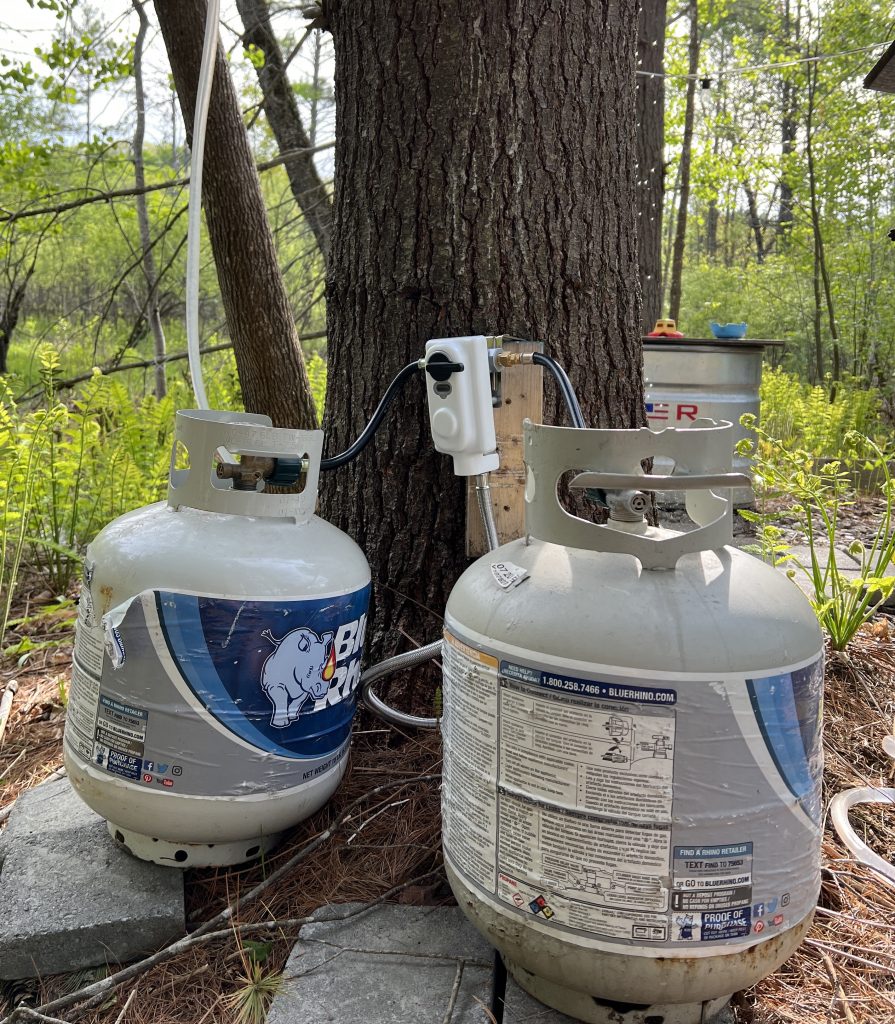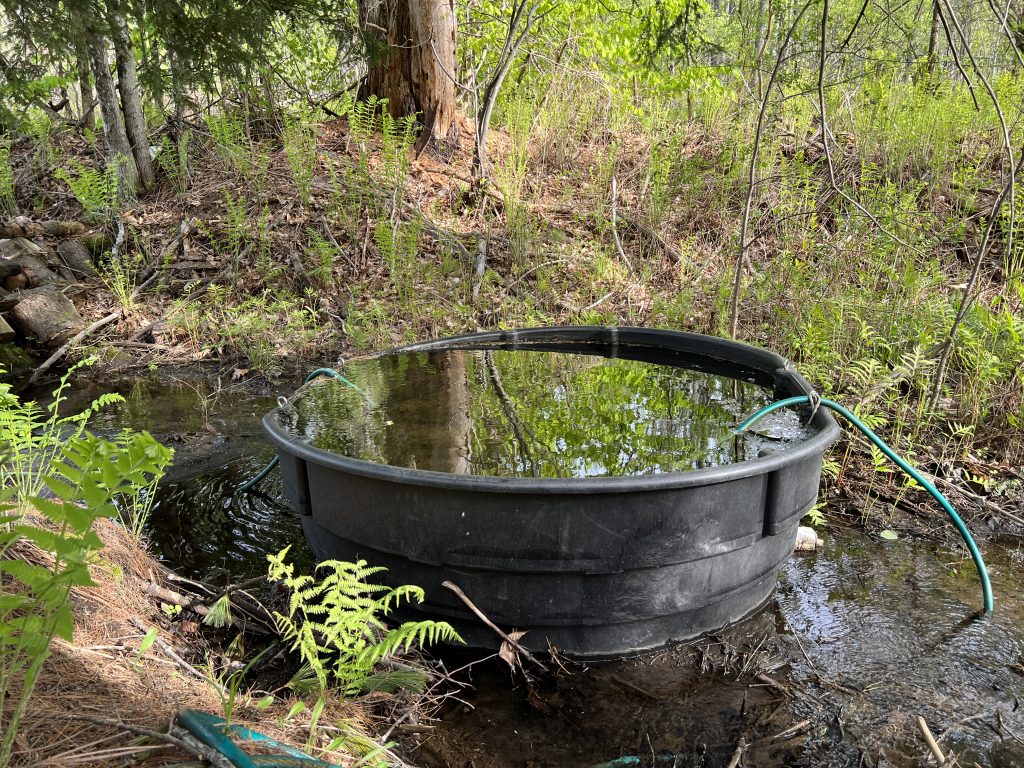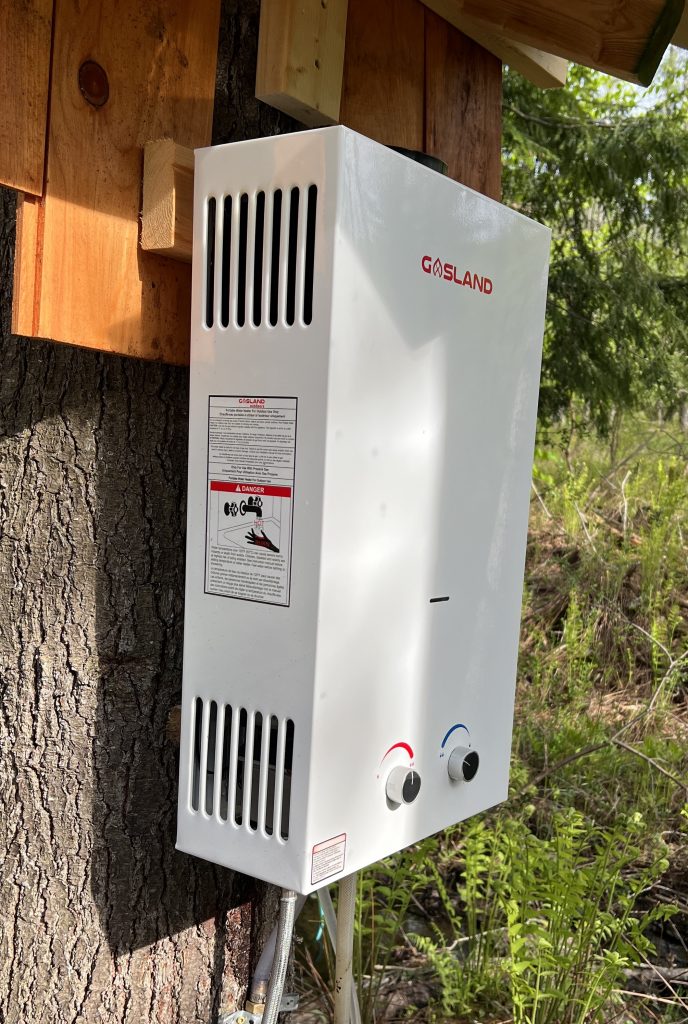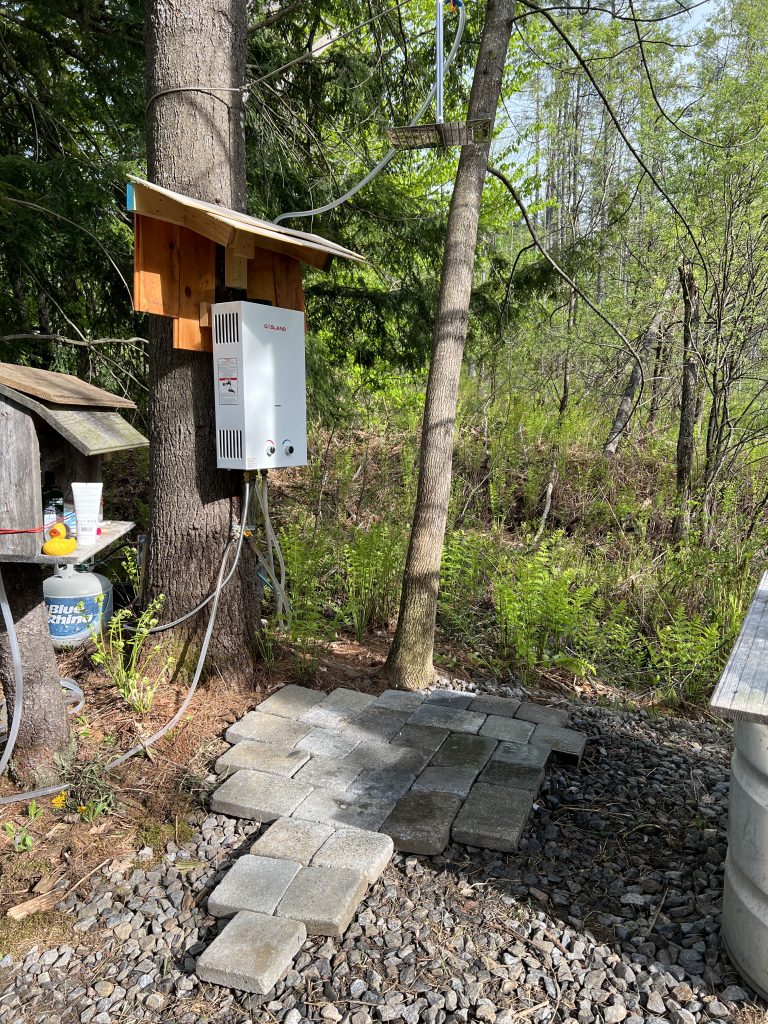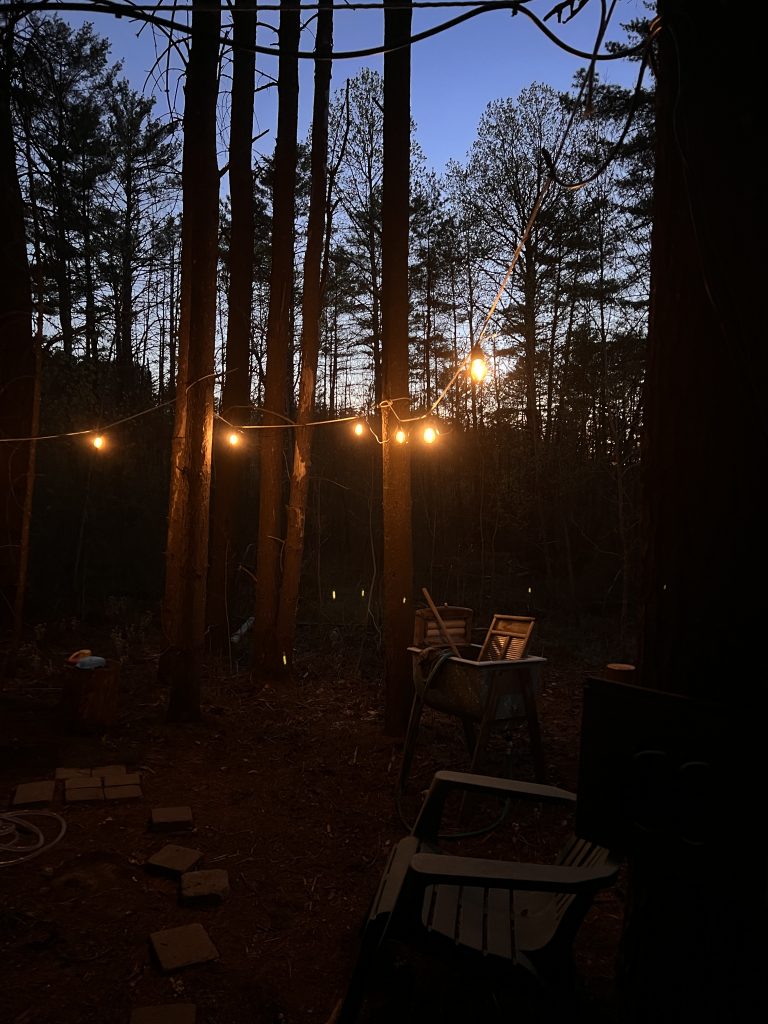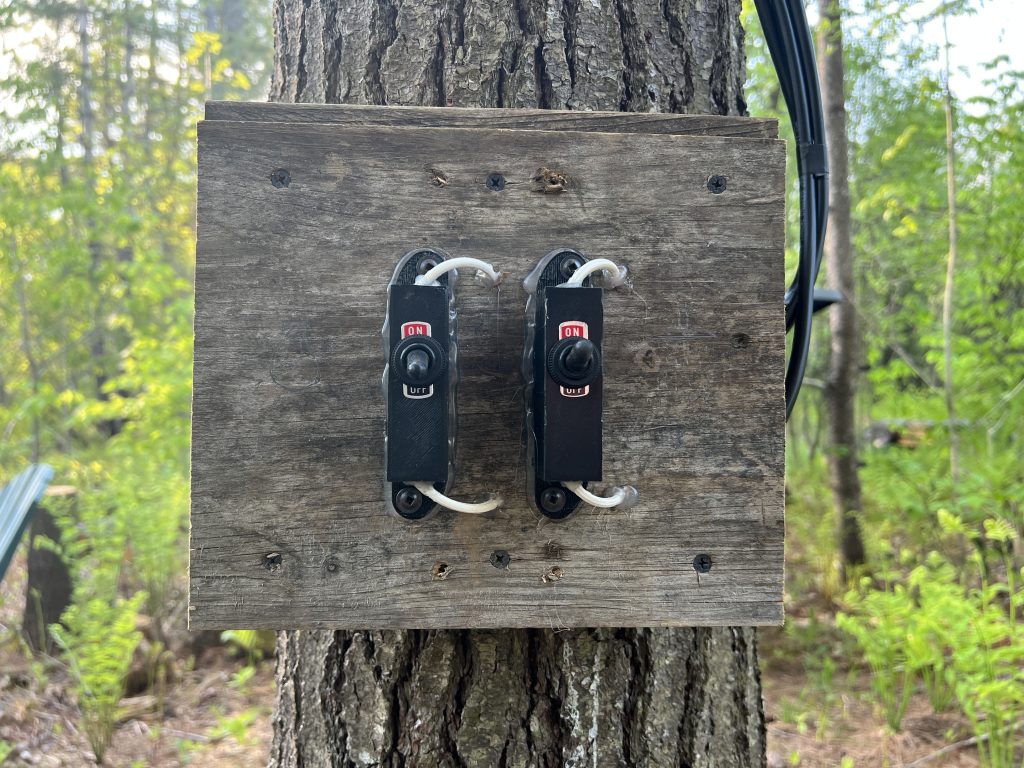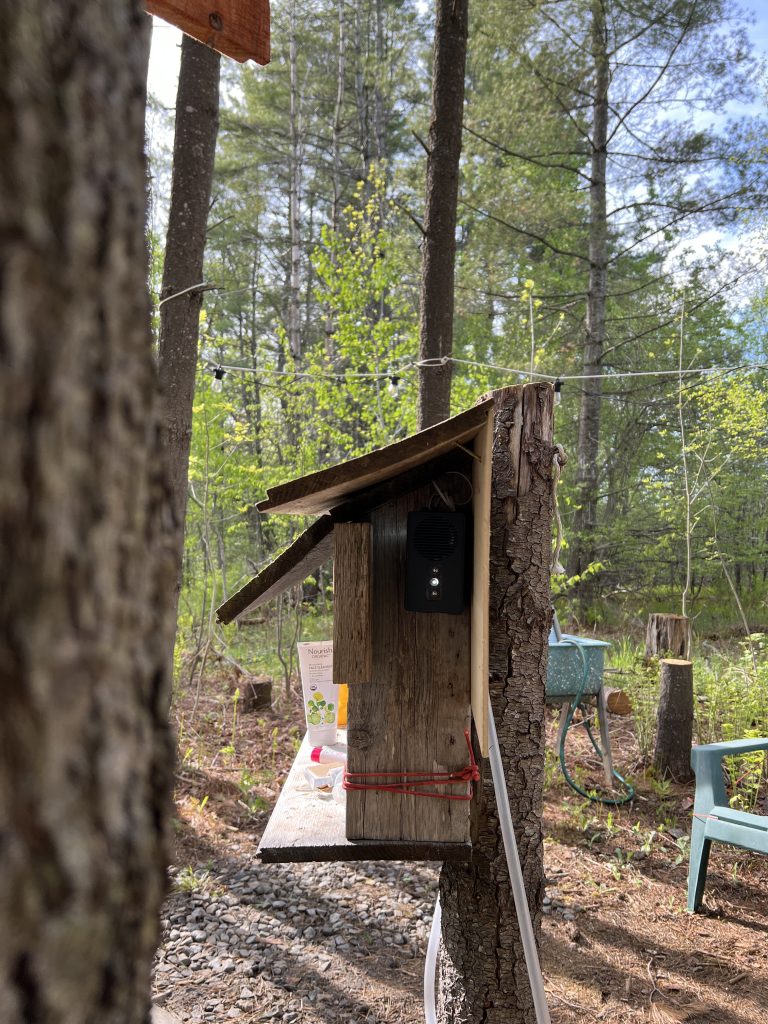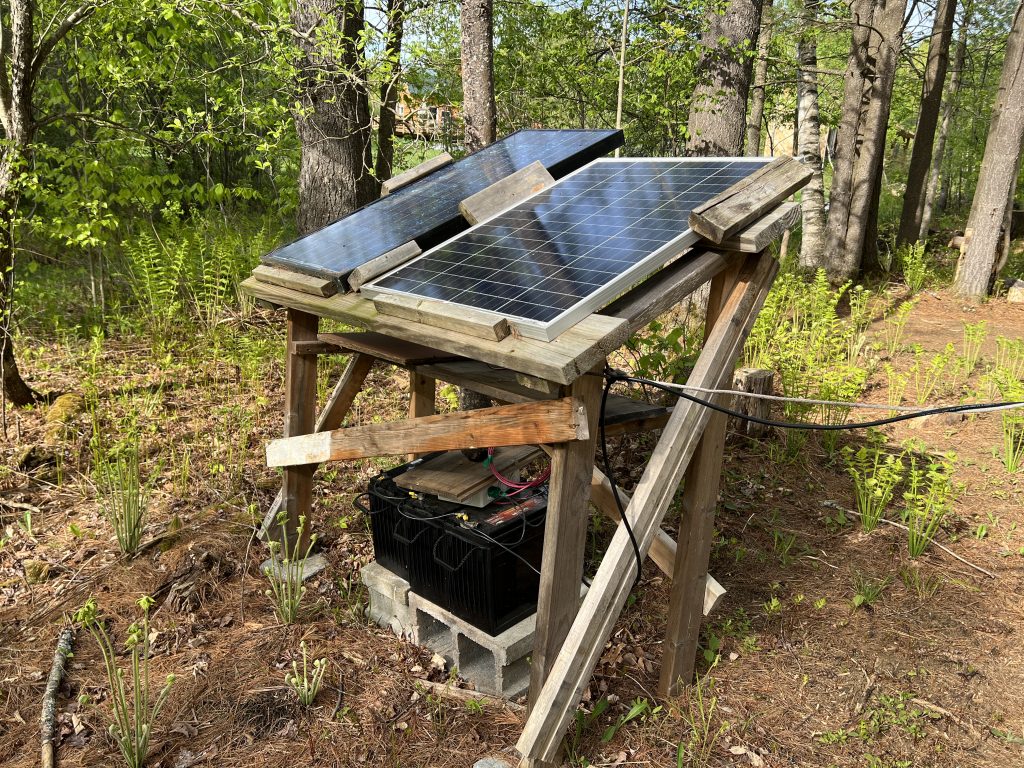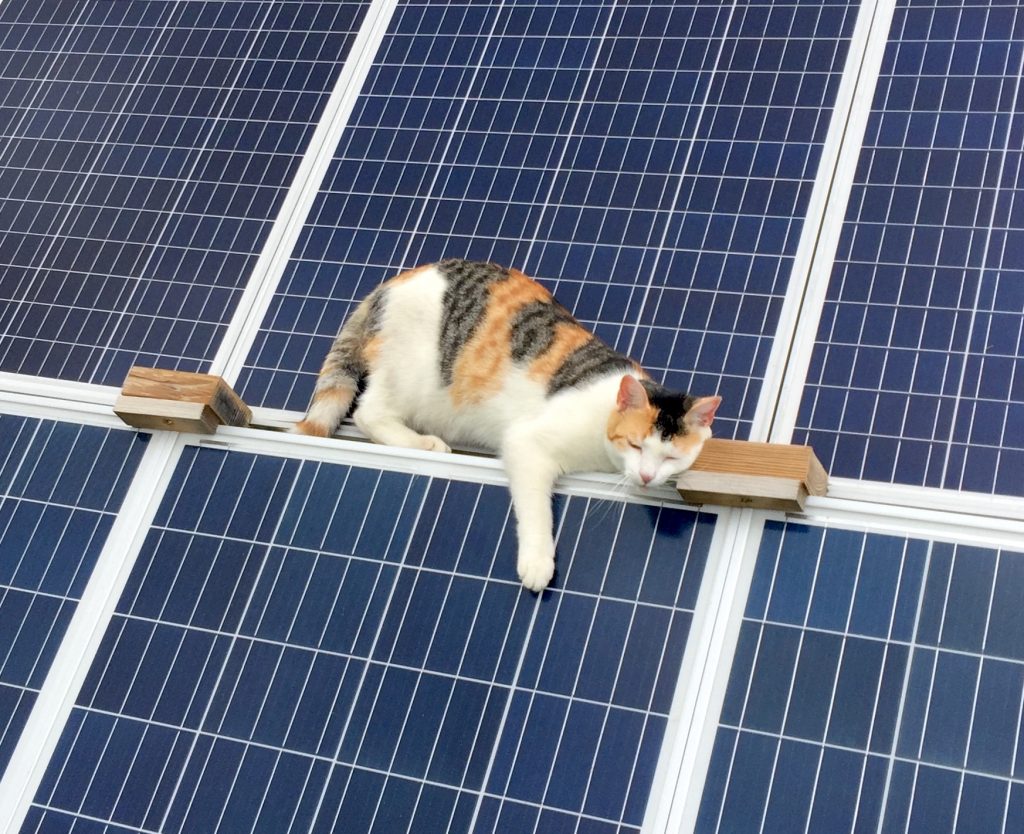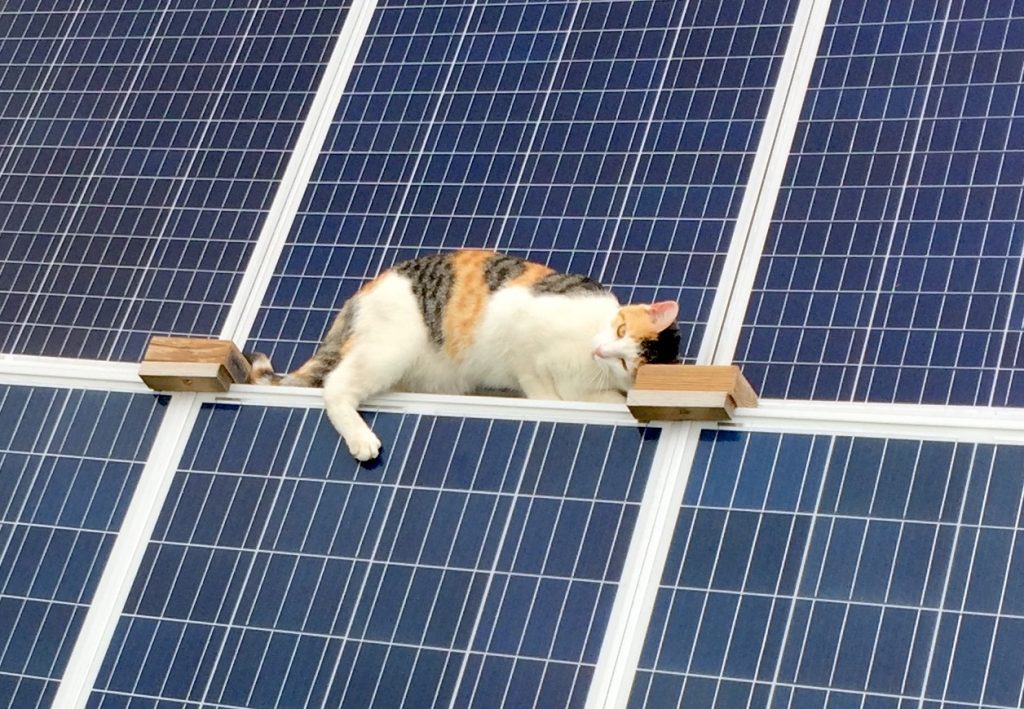With our recent acquisition of an AC unit to help us through the unfortunately more common heat waves, it became evident that we would need to upgrade our charge controller. The old one could take in no more than 80A from the panels, and the AC unit consumes 70A which leaves us with very little to run everything else in the house. So I bought a nice charge controller, rated for 100A but which can do up to 150A.
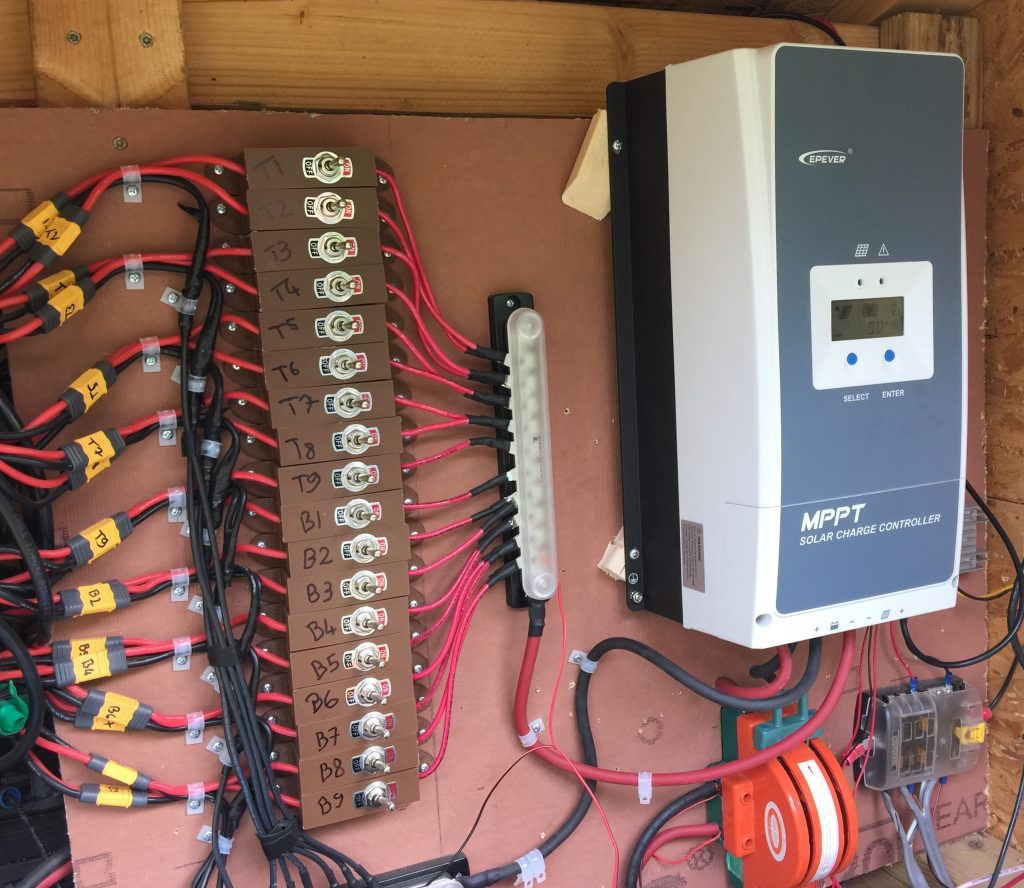
It is much bigger than the previous one so I made a mess of my wiring panel. I’m not going to worry about it for now. I don’t know when this will happen, but soon enough, we will build a root cellar and move the solar setup into it. Then I’ll have a good opportunity to rewire properly.
I’m still figuring out how the new controller behaves and what it delivers in reality. We can run the AC as long as the panels produce 70A or more, doing it outside of this means the batteries will get drained very quick.
Now, early June, it seems as though we have 6 hours of 70+A to work with. 6 hours during which we’ll run the AC no matter the temperature outside to thermally charge the house as much as possible. This is exactly what we do in the Winter with stove heat. We don’t just want the desired temperature in the room, we want it embedded in every wall, every mattress, every piece of furniture and as deep as possible.

I got the setup ready in the nick of time for a heat wave. During these 6 hours, the house is really nice, a real refuge from the heat. This AC unit at 8000BTU doesn’t make it nice and cool, but it does keep it comfortable, much more so than previous Summers. In this way, the AC is already amazing.
Towards the end of the day, with the Sun still pouring heat but the panels not making 70+A, the house remains comfy from the accumulated cold, but starts to warm up. When the Sun goes bellow the horizon, the house is just warm and we switch to window fans to bring in fresh outside air.

The new charge controller is MPPT, all the previous ones I owned were PWM. I tried to understand how MPPT works but I still don’t quite get it. The graphs for PWM are show a pretty obvious “algorithm”: open the flood gates when the voltage is low, close them when it’s right. Apparently MPPT charge controllers are more efficient. But they do cost a lot more and I can’t say I ever had an issue with the PWMs. It makes sense to milk your panels as much as you can when you have a limited surface to install them on (roof, boat, RV). In our case we have more than enough panels that PWMs were a non-issue. Except if you want a nice charge controller that does better at higher amperages.
While the PWM graph reflects the Sun’s path over the panels through a day:

The fancy pants MPPT aligns itself to the load instead of turning input from the panels on and off:

And I mean, it really aligns itself to the load.

It’s almost a shame, I don’t know how much I can pull from the panels because you don’t see the peak unless you reach it with your load. That’s what a fancy charge controller does I guess. It came with a whole bunch of monitoring gizmos, but they are unnecessary as my monitoring is decoupled from the controller. Really, all I want from it is the ability to go beyond 80A, and it certainly does that.
So here we are today with 18 ~110W panels and the biggest charge controller we can get. This is pretty much the maximum for a run of the mill off grid system. But these charge controllers can be run in parallel, and I would like to explore wind power. My crystal ball tells me that in the next 5 years, we will have more panels and wind capabilities. In some ways it’s simple engineering curiosity. In other ways, we’ve made cloudy days a non-issue, it would be nice to make Winter one too. And maybe we could push for an electric vehicle, or a bigger AC, or both. We recently got a little wind spinner toy for the garden, I look at it go through the day, and I’m getting curious about wind. We’ll see, for now we’re just enjoying a nice step which should carry us for a while, and the luxury of air conditioning.
Gratuitous panel pic, I enjoy their sight
